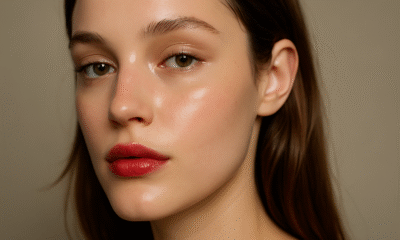Beauty & Lifestyle
Makeup artists reveal 2025’s hottest trends and why your classic red lipstick is about to get a makeover
From glazed skin to playful liner the best makeup trends of 2025 reinvent timeless beauty staples with a bold twist.
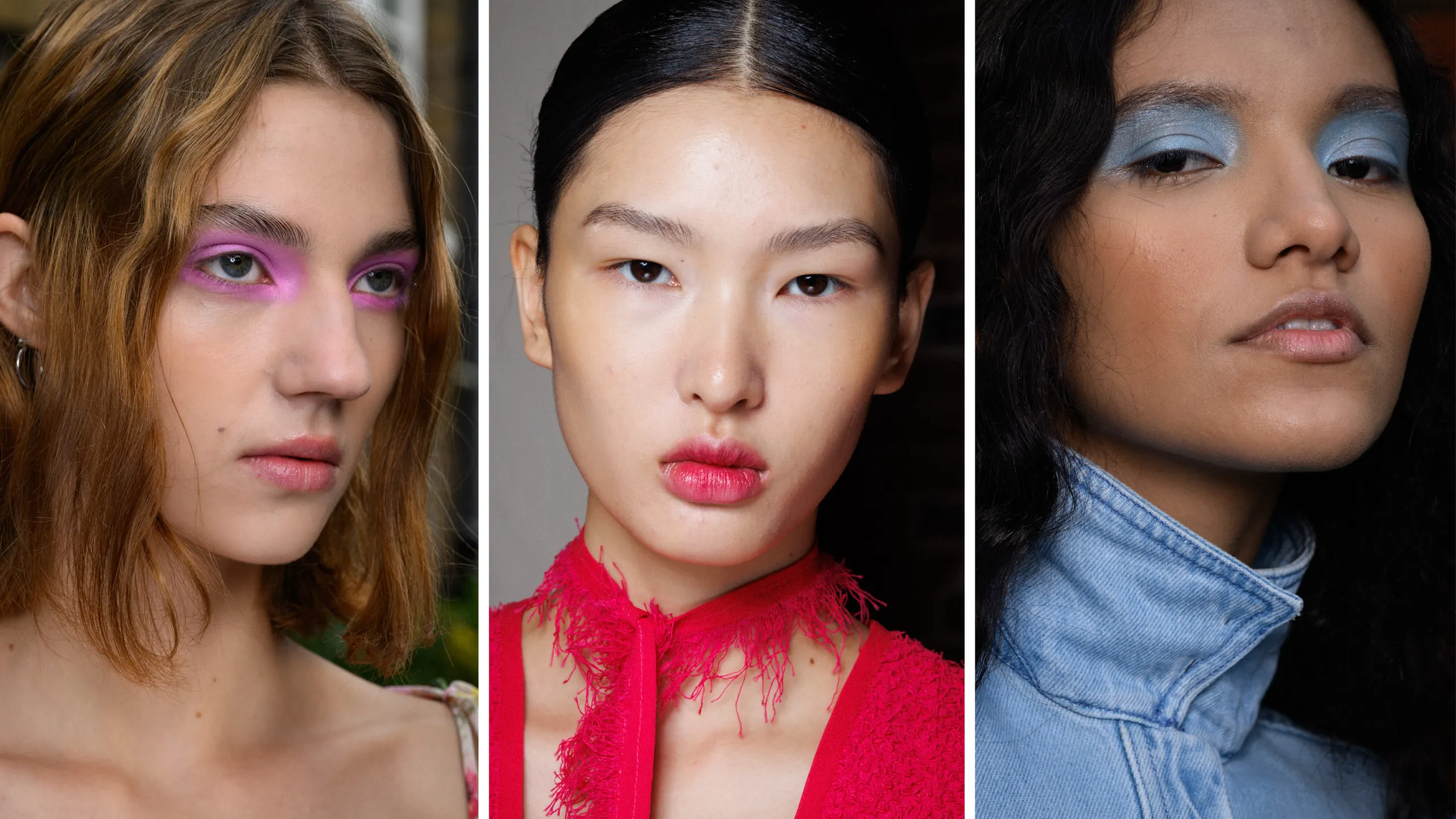
Forget everything you knew about last year’s contour and glossy lips — 2025 is rewriting the rules of classic beauty, and the world’s top makeup artists are here for it. If your vanity is still stocked with the same old neutrals, these fresh trends might just convince you to shake things up.
Glazed skin stays, but with an edge
Radiant, dewy skin is still ruling runways and social feeds, but this year it’s paired with surprising matte accents. Think glassy highlighter on cheekbones combined with velvet-matte bronzer for dimension. Brands are rolling out hybrid foundations that blur imperfections while letting natural skin peek through.
Red lips, reimagined
The power red lip never really left — but in 2025, it’s all about unexpected finishes. Makeup pros are blending crimson with deep berry stains or topping classic scarlet shades with holographic gloss. Some trendsetters are even pairing red lips with nude eyes for a fresh spin on old Hollywood glam.
Graphic liner for every mood
Say goodbye to shy cat eyes. Graphic eyeliner is back in a big way: bold floating creases, electric colors, and negative space wings are exploding on TikTok and backstage at major shows. Experts say this playful liner trend lets people express their moods in a single flick.
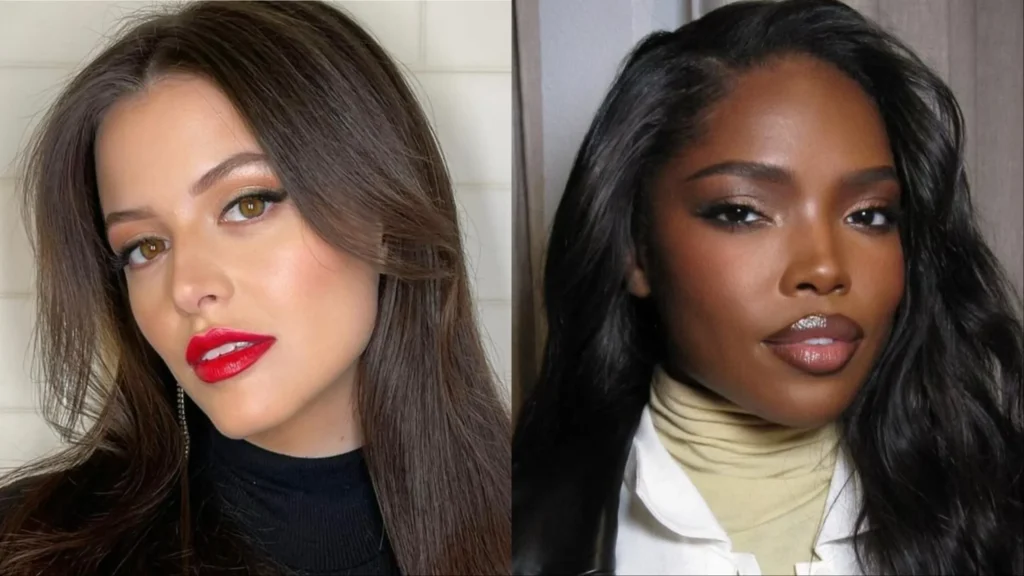
Pastel lids meet statement brows
Pastel eyeshadow isn’t just for spring anymore. Lilac and mint shadows are popping up all year, blended softly for a watercolor wash. Paired with brushed-up, feathery brows, the look feels ethereal yet modern. Brow gels in tinted shades are also trending — expect to see colorful arches on your feeds soon.
Blush draping makes a big comeback
Blush is no longer just for the apples of your cheeks. “Draping” — sweeping blush from cheekbones to temples — is taking over, giving faces a lifted, youthful glow. This ‘80s-inspired technique works beautifully with cream blushes in peach, rose, and even coral.
Makeup minimalists still win
For all the bright and bold looks, minimalists aren’t left out. Skin tints, sheer lip oils, and fluffy brows are 2025 essentials for anyone who loves a five-minute face. The key is lightweight layers that enhance, not mask, natural beauty.
In short, this year’s biggest beauty trends pay homage to timeless classics — but twist them with unexpected textures, color pops, and fearless fun. Whether you’re an old-school lipstick lover or ready to paint neon liner, 2025 wants you to play, remix, and glow like never before.
Beauty & Lifestyle
7 Times Wearing Full-Coverage Foundation Turned Into a Beauty Blunder
From ghostly flashback photos to chalky matte finishes, Gen X makeup trends prove less isn’t always more. Wearing Full-Coverage Foundation Turned Into a Beauty Blunder

There was a time when beauty was defined not by glowing, natural radiance but by how perfectly matte your face could look. Decades before the era of “glass skin” and minimal makeup routines popularized by South Korea’s beauty industry, the ’80s and ’90s were all about full-coverage foundation. To many, it felt like a badge of honor—an impenetrable mask that erased every pore, every shine, and sometimes even every hint of natural skin tone.
But as we look back, it’s clear that what seemed like perfection at the time was, in fact, one of the biggest beauty blunders. And Gen X, growing up on powder compacts and chalky liquid formulas, carried the torch for the heavy-handed foundation look.
The Matte Obsession
During the ’80s and ’90s, shine was the enemy. Many Gen X women and men recall hearing their mothers or grandmothers say, “I have to powder my nose.” This phrase wasn’t just about touch-ups—it symbolized an entire beauty philosophy. To be polished meant to be matte, even if your natural skin was already flawless.
The matte obsession was so intense that people intentionally picked shades one to two tones lighter than their natural complexion. The result? A flat, mask-like finish that gave photographs a ghostly, unnatural effect. The culprit was often titanium dioxide, a common ingredient in powders and foundations of the time, which reacted harshly with camera flash. Back then, photos weren’t digital; these were film cameras, so every wedding album or high school yearbook immortalized that pale, powdery look.
Powder Foundations and the “Airbrushed” Look
The rise of powder compacts was another defining beauty moment. Brands pushed powder foundations as the ultimate shortcut to flawless skin. With promises of an “airbrushed” look, these powders covered everything—pores, freckles, even natural undertones.
However, the irony was striking. Under harsh lighting or camera flashes, the powder didn’t look seamless. Instead, it created an ashy, mask-like appearance. This was especially true in flash photography, leaving people looking almost ghostly in pictures. If you’ve ever looked at a Gen X family photo and noticed that everyone’s faces were lighter than their necks, you’ve seen this makeup mishap in action.
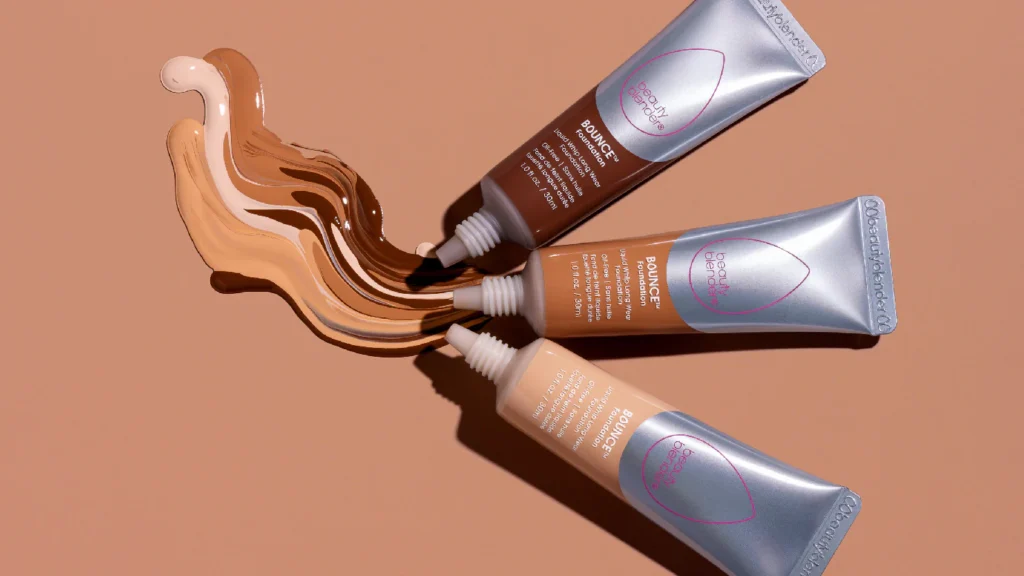
Foundation Matching Mistakes
Another common blunder was ignoring the neck when choosing foundation shades. Back then, makeup matching was often about the hand or jawline—completely overlooking the fact that a mismatch would become glaring in photos. Today, beauty influencers on platforms like TikTok remind us that blending foundation into the neck is non-negotiable, but for many in the ’90s, that lesson came too late.
When Heaviness Meant Perfection
Why was piling on heavy foundation so popular? In part, it was cultural. Flawless, porcelain skin was considered the epitome of beauty, and showing natural pores or texture was frowned upon. Even if someone had great skin, they still felt compelled to cover it up. Unlike today’s minimalist trends where celebrities like Hailey Bieber and Zendaya embrace glowing, skin-like finishes, the ’90s ideal was about hiding imperfections at all costs.
Lessons Learned from Gen X
Fast forward to today, and the mistakes of Gen X serve as valuable beauty lessons. Modern formulations favor breathable coverage, skin-matching technology, and dewy finishes that highlight natural texture. Beauty gurus emphasize that less is more, and glowing, natural skin is now celebrated.
The once-popular matte-heavy style has been replaced by luminous foundations, tinted moisturizers, and products designed to enhance, not hide. While nostalgia for ’90s trends often resurfaces in fashion, this particular beauty habit has (thankfully) stayed in the past.
Pop Culture Influence
Pop icons of the ’90s like Madonna, Cindy Crawford, and even TV stars from shows like Beverly Hills, 90210 reflected these beauty standards. Watching them on VHS tapes, the matte skin look was aspirational. But in hindsight, even celebrities fell victim to mismatched shades and chalky textures.
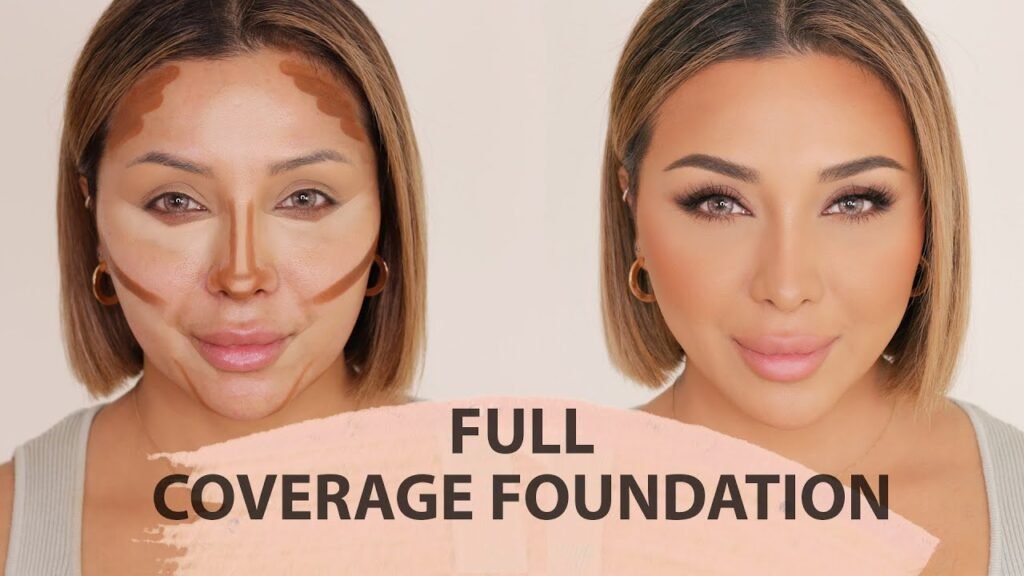
The Rise of Skin Positivity
Today, we live in a completely different era. Glass skin, clean girl aesthetic, and skinimalism dominate the conversation. Brands are more inclusive, offering broader shade ranges and formulas that celebrate skin diversity. Social media platforms like Instagram and TikTok have democratized beauty advice, teaching younger generations what Gen X had to learn the hard way.
Conclusion
Wearing full-coverage foundation decades ago may have felt like the ultimate beauty trick, but looking back, it was a clear blunder. Chalky finishes, ghostly flashbacks, and mismatched shades left many regretting their choices when flipping through old photo albums.
Still, these beauty mistakes were stepping stones, shaping how far the industry has come. Today, the focus is on authenticity, glow, and embracing natural skin. And if there’s one thing we can all agree on, it’s that no one wants to relive the ghostly flashback era again.
For more stories that dive into beauty trends past and present, visit Daily Global Diary.
Beauty & Lifestyle
The Top Beauty Buys of 2025 Vogue Editors Share Their Must-Have Picks (And Some Are Under $20
From cult-favorite Korean serums to luxe glosses and anti-frizz saviors, Vogue’s beauty team reveals the products that truly stood out this year—trusted, transformative, and ready to shine.

Picking this year’s top beauty products felt like choosing favorite children—impossible, but undeniably rewarding. As Vogue’s Beauty Editors reflect on 2024 and set sights on 2025, they spotlight the skin-care, hair-care, makeup, and wellness gems that made real impact—combining nostalgia, innovation, and sustainability.
Sometimes I feel bad asking my colleagues to name the best new beauty products. Choosing one can often feel like picking a favorite child,” admits a Vogue editor, and that honesty shines through every recommendation.
Below, explore the stellar picks that Vogue editors swore by this year—many of which are currently on sale during Amazon Prime Day 2025.
Best Skin-Care Products
- ($89)** — Used morning and night, this serum delivers clinically proven firmer, plumper skin within weeks, according to Jessica Diner, Vogue’s European beauty director.
- ($40)** — A luxe K‑beauty favorite that transforms into a delicate foam, praised by Kiana Murden for leaving skin soft and soothed.
- ($17)** — This propolis‑niacinamide blend became a breakout star, calming acne and brightening skin while retaining moisture.
- U Beauty The Return Eye Concentrate ($148) — Famed for firming and brightening under‑eye skin, this Japanese-inspired formula blends hyaluronic acid, peptides, beta-glucan, and marine extracts.
Top Makeup Picks
- ($26)** — Offers a fresh, dewy glow reminiscent of a healthy flush—ideal for building natural, adjustable color.
- ($48)** — Vogue editors call this cream contour stick a genius blend of sculpting and glow, performer and highlighter in one.
- ($26)** — A cult classic, delivering rich, natural lashes with every swipe.
Hair-Care & Styling Gems
- ($34)** — Adds a salon-grade shine and polish in minutes—editors call it “a quick fix for dull strands.”
- ($32)** — A powerhouse anti-frizz spray that works even in humidity, available in regular, extra strength, and curly variants.
Luxury Supplements & More
- Elysium Basis NAD⁺ Supplement ($60) — A science-backed formula designed to support cellular longevity—an emerging wellness favorite.
- Clarins Lip Comfort Oil ($30) — A rich, nourishing lip oil that delivers both color and hydration.
- Tronque Triple Active Body Milk ($120) — A luxe body lotion praised for firming and deeply moisturizing.
Editor Favorites: Real Reviews
- After a laser facial, Senior Beauty Editor Margaux Anbouba reached for Chanel’s N°1 de Chanel face cream, celebrating its powerful hydration and soothing properties.
- Wellness Editor Morgan Fargo fell hard for Allies of Skin Copper Tripeptide & Ectoin Repair Serum, which significantly reduced her dark spots and redness.
- Beauty Editor-at-Large Arden Fanning Andrews raves about Tatcha’s The Silk Sunscreen, calling it the go-to UV mineral protector with zero white residue and travel-friendly size.
Beauty & Lifestyle
What’s Really in Your Lipstick Shoppers Are Ditching Chemicals as $104 Billion Beauty Industry Embraces Clean Revolution
From botanical serums to biodegradable packaging, the beauty trends of 2025 reveal a seismic shift: consumers want nature, transparency—and they’re ready to pay for it.

As the U.S. beauty industry races toward a projected $104.7 billion in revenue by 2025, a powerful transformation is sweeping through the world of cosmetics, skincare, and personal care. Today’s consumers are no longer just asking what works—they’re demanding to know what’s in it, where it came from, and what it does to the planet.
At the heart of this movement is a growing preference for natural, organic, and clean beauty products. With 68% of consumers now specifically looking for “clean” labels and 59% actively influenced by natural or organic claims, brands that fail to evolve risk being left behind.
Clean beauty is no longer a niche,” says an industry analyst from the Environmental Working Group.
“It’s the baseline expectation for the modern consumer.
hemicals Out, Nature In: The Rise of Conscious Beauty
The average American woman uses around 9 personal care products daily, containing a staggering 126 unique ingredients, many of which are synthetic chemicals with unknown long-term effects. For one in four women, that number rises to 15+ products a day.
This growing ingredient overload is sparking serious questions among consumers, especially younger demographics. And the industry is listening.
In response:
- Legacy brands are reformulating products with plant-based ingredients.
- Indie brands are leading with vegan, cruelty-free, and non-toxic formulations.
- And new startups are leveraging biotechnology to create sustainable, skin-loving ingredients from algae, mushrooms, and even upcycled food waste.
According to Nosto’s 2025 consumer report, sustainability isn’t just a bonus anymore—55% of shoppers are now willing to pay more for products that are eco-friendly and ethical.
The Green Gold Rush: What’s Driving the Surge?
The global market value of natural and organic beauty is expected to explode to $59 billion by 2031, a figure that reflects not just demand but a major shift in consumer psychology.
Today’s beauty buyer is:
- Label-savvy, scanning for red-flag ingredients
- Planet-conscious, choosing products with minimal packaging or biodegradable materials
- Health-aware, avoiding endocrine disruptors and artificial fragrances
- Socially active, favoring brands with fair trade, transparency, and inclusivity
This new era is blurring the lines between cosmetics and wellness, with skincare formulas now boasting adaptogens, CBD, probiotics, and marine collagen.
Brands Leading the Charge
Some of the most buzzworthy transformations include:
- L’Oréal launching fully recyclable skincare lines with paper-based tubes
- Sephora expanding its “Clean at Sephora” category to include stricter ingredient vetting
- The Ordinary offering ingredient-by-ingredient transparency down to molecular concentration
- New brands like Ilia, Herbivore, and Youth To The People gaining cult status for clean beauty without compromise
We’re in the middle of a consumer-led revolution,” says a brand director at Ulta Beauty.
Our shelves are changing faster than ever—and it’s being driven by people who read the back of the bottle.
What’s Being Left Behind?
As natural beauty surges, several long-used elements are quickly becoming industry villains, including:
- Parabens
- Phthalates
- Sulfates
- Synthetic dyes and fragrances
- Microplastics
Retailers and manufacturers alike are phasing these out to meet growing demand and preempt future regulations.
The Future of Beauty: Transparent, Tech-Driven, and Nature-Focused
Looking ahead to 2026 and beyond, technology will play a larger role in clean beauty. Expect AI-powered skin analysis apps, personalized skincare routines built around DNA profiling, and blockchain-tracked ingredients for full supply chain transparency.
One thing is clear: beauty in 2025 is no longer just about appearance—it’s about awareness.
-

 Entertainment1 week ago
Entertainment1 week agoAlyssa Milano removes breast implants says she finally feels free and authentic
-

 Technology News1 week ago
Technology News1 week agoChina opens Shanghai digital yuan hub to rival US dollar but here’s the bigger plan
-

 Entertainment7 days ago
Entertainment7 days agoDolly Parton delays Las Vegas concerts by nine months citing health challenges but promises unforgettable return
-
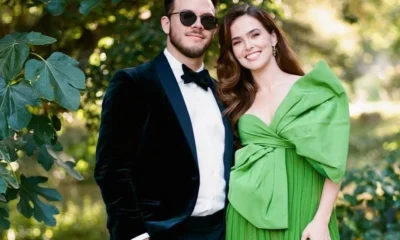
 Entertainment7 days ago
Entertainment7 days agoZoey Deutch engaged to comedian Jimmy Tatro after 4 years of dating with romantic beach proposal
-

 Politics7 days ago
Politics7 days agoBarack Obama blasts Trump over Tylenol autism claim calling it ‘violence against truth’ but that’s not all he said…
-

 Sports4 days ago
Sports4 days agoTottenham’s Champions League wake-up call… why Spurs must stop looking like a Europa League side
-

 Technology1 week ago
Technology1 week agoGoogle shocks crypto world with $3B deal for Cipher Mining stake but here’s the twist
-

 Politics1 week ago
Politics1 week agoBarack Obama slams Trump administration over Tylenol autism claim calls it violence against truth






